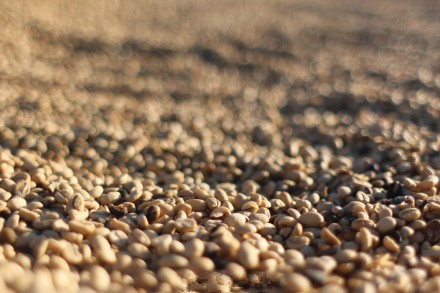Cultivation techniques of small Coffee in Yunnan Province Pest Control of Coffee trees

1. Coffee tiger, longicorn beetle.
The coffee tiger longicorn beetle harms the coffee trunk for more than 2 years. At first, it eats between the cambium and xylem, and then eats the xylem. It has a great effect on coffee, the light ones make the plants yellow, withered branches and fruit drop, and the serious ones die of the whole plant. At the initial stage of the damage, there was no obvious hole in the appearance, but only slightly raised in the epidermis of the injured area.
Prevention and control methods:
① strengthen management, reasonable pruning, proper shade. ② artificially killed adults and larvae, cut off the damaged branches and burned them in time.
two。 Coffee leopard bark moth.
It is widely distributed and is one of the common coffee pests, which can harm a variety of cash crops. The larvae overwintered in the branches, and the larvae often ate upward in the branches, forming a tunnel of 30cm to 60cm.
Prevention and control methods:
① combined with coffee tree pruning to cut off the damaged branches and burn them centrally. ② stabbed the larva to death with wire into the worm track. ③ injected 1 ∶ 10-fold dichlorvos into the wormhole, then stuffed it with cotton and sealed the hole with mud, which could poison the larvae of the coffee trunk.
3. Crustaceans:
① coffee green beetle.
Both adult trees and seedlings can be harmful, and branches, leaves, stems and fruits are all harmful objects. It occurred seriously in the dry season, and the number of insect population decreased sharply in the rainy season. Ants often move on the injured trees. The leaves yellowed after injury, deformed and wrinkled, and often induced a large number of soot disease, which had a great impact on the photosynthesis and plant growth of coffee.
Prevention and control methods:
With dimethoate or quick culling, Shaopoling spray, spray every other week, 3 times in a row, the effect is very good. It can also be sprayed with stone sulfur mixture or turpentine mixture.
② coffee root pink scale.
The main damage to the root, the initial damage near the root neck, and then gradually spread to the main root, lateral root, sucking its juice. The insect is transmitted by ants (small yellow ants often crawl back and forth and pile up fine soil on the stem and surface of the affected plant) and symbiosis with fungi. In the later stage of the damage, the fungus formed a series of grayish-brown tumor bags in the root, which wrapped the worm in it, affected the root growth, made it black and rotted and died.
Prevention and control methods:
At the initial stage of the damage, dichlorobenzene powder was scattered in the soil around the root neck with a depth of about 10 centimeters, and the death rate reached 92% after 7 days. In the later stage of the damage, the topsoil around the root can be removed, the depth is about 10 cm, 30 grams of p-dichlorobenzene are sprinkled, and then the soil is firmly covered. The mortality rate can reach 100% after 7 days.
Important Notice :
前街咖啡 FrontStreet Coffee has moved to new addredd:
FrontStreet Coffee Address: 315,Donghua East Road,GuangZhou
Tel:020 38364473
- Prev

Cultivation techniques of small Coffee in Yunnan Province Coffee Tree Disease Control
1. Coffee rust is the main disease of coffee, the most harmful, the damaged plants, light reduced yield, serious death. Coffee rust is mainly harmful to leaves and sometimes to young fruits and twigs. After the leaves were infected, many light yellow spots appeared at first and enlarged in the form of water stains, followed by orange-yellow powdery spores on the back of the leaves, and there was a light green halo around the disease spots, which gradually expanded or connected in the later stage.
- Next

Cultivation techniques of small Coffee Irrigation and fertilization of Coffee trees
Irrigation of coffee planting areas in Yunnan Province can be divided into rainy season and dry season. Irrigation in the dry season, especially in the flowering period, can ensure the normal growth and flowering of coffee plants, improve the fertility rate, and achieve high yield. Fertilization is one of the key measures to obtain high yield of cultivated coffee. According to the data, for every kilogram of dried beans harvested, coffee trees have to come from the soil.
Related
- Detailed explanation of Jadeite planting Land in Panamanian Jadeite Manor introduction to the grading system of Jadeite competitive bidding, Red bid, Green bid and Rose Summer
- Story of Coffee planting in Brenka region of Costa Rica Stonehenge Manor anaerobic heavy honey treatment of flavor mouth
- What's on the barrel of Blue Mountain Coffee beans?
- Can American coffee also pull flowers? How to use hot American style to pull out a good-looking pattern?
- Can you make a cold extract with coffee beans? What is the right proportion for cold-extracted coffee formula?
- Indonesian PWN Gold Mandrine Coffee Origin Features Flavor How to Chong? Mandolin coffee is American.
- A brief introduction to the flavor characteristics of Brazilian yellow bourbon coffee beans
- What is the effect of different water quality on the flavor of cold-extracted coffee? What kind of water is best for brewing coffee?
- Why do you think of Rose Summer whenever you mention Panamanian coffee?
- Introduction to the characteristics of authentic blue mountain coffee bean producing areas? What is the CIB Coffee Authority in Jamaica?

